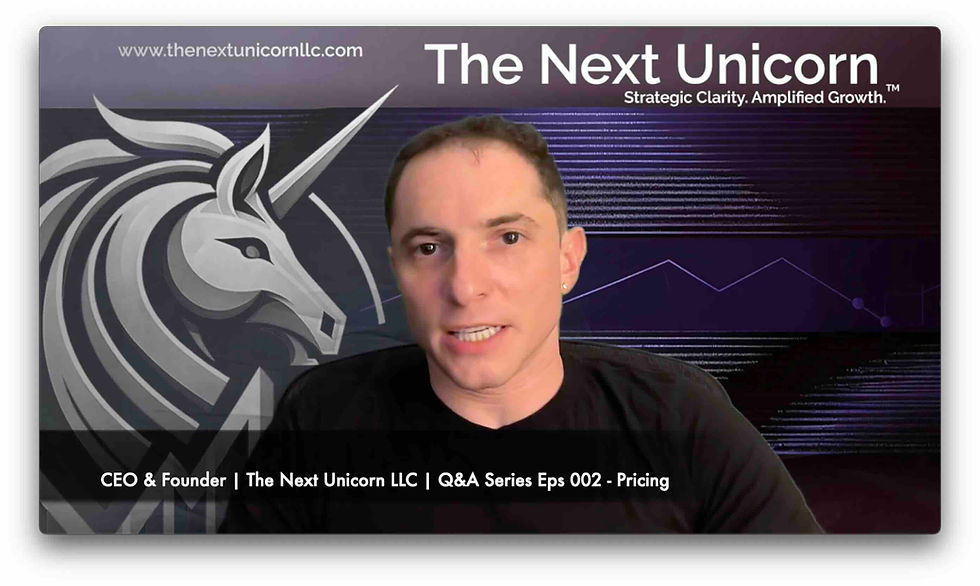Silverstein's Model of Stakeholder Loyalty
- Craig Silverstein

- Jul 30, 2024
- 4 min read
Updated: Aug 12, 2024
From executives and employees to investors and partners, trust is the foundation of all successful relationships. Let’s dive into Silverstein's Model of Stakeholder Loyalty and see how it applies across the board.

The Core of Silverstein's Model: Mission, Values, and Communication
To truly earn trust, your actions need to align with three key elements: Mission, Values, and Communication. This applies to every stakeholder, both external and internal.
Mission: Knowing What You’re Trying to Do
A clear mission guides the company's purpose and direction. It’s crucial for everyone—customers, employees, executives, and investors—to understand and believe in your mission. Take Google for example. Their mission to "organize the world’s information and make it universally accessible and useful" resonates deeply with users, employees, and investors who share that vision. It drives alignment and commitment across the board.
Values: Knowing Why You’re Doing It
Values are your guiding principles. They define your company culture and influence every decision you make. When your values align with your mission, authenticity follows. Patagonia’s commitment to environmental sustainability is a core value that permeates every aspect of their business. This authenticity doesn’t just attract loyal customers; it also draws in employees who are passionate about the cause and investors who believe in sustainable business practices.
Communication: Telling Your Story Because It Matters
Communication is where the magic happens. It’s not enough to have a mission and values; you need to communicate them effectively. Clear, honest communication builds trust and ensures everyone is on the same page. Apple’s transparent communication about their products and vision has created a brand loyalty that extends to employees and partners, fostering a unified understanding of their goals and expectations.
The Power Combinations: Authenticity, Engagement, and Clarity
Now, let's talk about what happens when you combine these elements.
Mission + Values = Authenticity
When your mission aligns with your values, you get authenticity. Authenticity is about being genuine and true to what you stand for. It's the foundation of trust. Brands like Ben & Jerry's have built their success on authenticity, consistently aligning their mission of social justice with their values in every scoop of ice cream. This authenticity attracts customers, passionate employees, and investors who want to support a socially responsible company.
Values + Communication = Engagement
When your values are effectively communicated, you create engagement. Engagement means your stakeholders are not just passive participants; they’re actively involved in your brand. Nike’s values of innovation and empowerment are communicated through every ad campaign and internal memo, resulting in deeply engaged customers, motivated employees, and committed partners.
Communication + Mission = Clarity
When your communication aligns with your mission, you get clarity. Clarity ensures that everyone understands your purpose and direction. Google's mission to organize the world’s information is communicated clearly through their products and internal strategies, making it easy for users, employees, and investors to understand and trust what they do.
The Ultimate Goal: Loyalty
When you have Authenticity, Engagement, and Clarity, you achieve Loyalty. Loyalty is the ultimate goal—it means your customers, employees, executives, and partners trust you, believe in you, and stick with you through thick and thin. Amazon's relentless focus on customer-centricity, aligned with their mission, values, and clear communication, has built a loyal customer base and a dedicated workforce that keeps driving the company forward.
Real-World Examples: Success and Failure
Success Stories
Southwest Airlines: Their mission of making air travel affordable, combined with values of customer service and transparent communication, creates loyalty among both customers and employees. Their strong internal culture and clear mission have kept them flying high even during turbulent times.
Zappos: By aligning their mission to provide the best customer service with their values of employee happiness and open communication, Zappos has built a fiercely loyal customer base and a motivated workforce that feels valued and heard.
Cautionary Tales
Uber: Uber's rapid growth was marred by scandals and misaligned values, leading to a loss of trust. Their mission to revolutionize transportation was clear, but when values and communication fell short, it broke the Circle of Trust, affecting customers, employees, and investors alike.
Facebook: Despite its mission to connect the world, Facebook has struggled with trust issues due to inconsistent values and communication, leading to significant user backlash and loss of loyalty among both users and internal stakeholders.
Building Your Circle of Trust
The The Next Unicorn LLC understands the challenges tech founders face. Building loyalty isn’t just about having a great product; it’s about aligning your mission, values, and communication to create a Circle of Trust. This circle encompasses all your stakeholders, both external and internal. When you break any part of this circle, trust falters, but when you get it right, the loyalty you build is unshakeable.
Reach out to The Next Unicorn to learn more about how we can help you build your own circle of trust. Remember, loyalty isn’t just earned; it’s built through consistent, genuine actions that align with your mission, values, and clear communication.
That's Silverstein's Model of Stakeholder Loyalty—simple, effective, and essential for any company aiming for long-term success.

Craig Silverstein | CEO & Founder | The Next Unicorn LLC
Copyright © 2024 by The Next Unicorn LLC





Comments